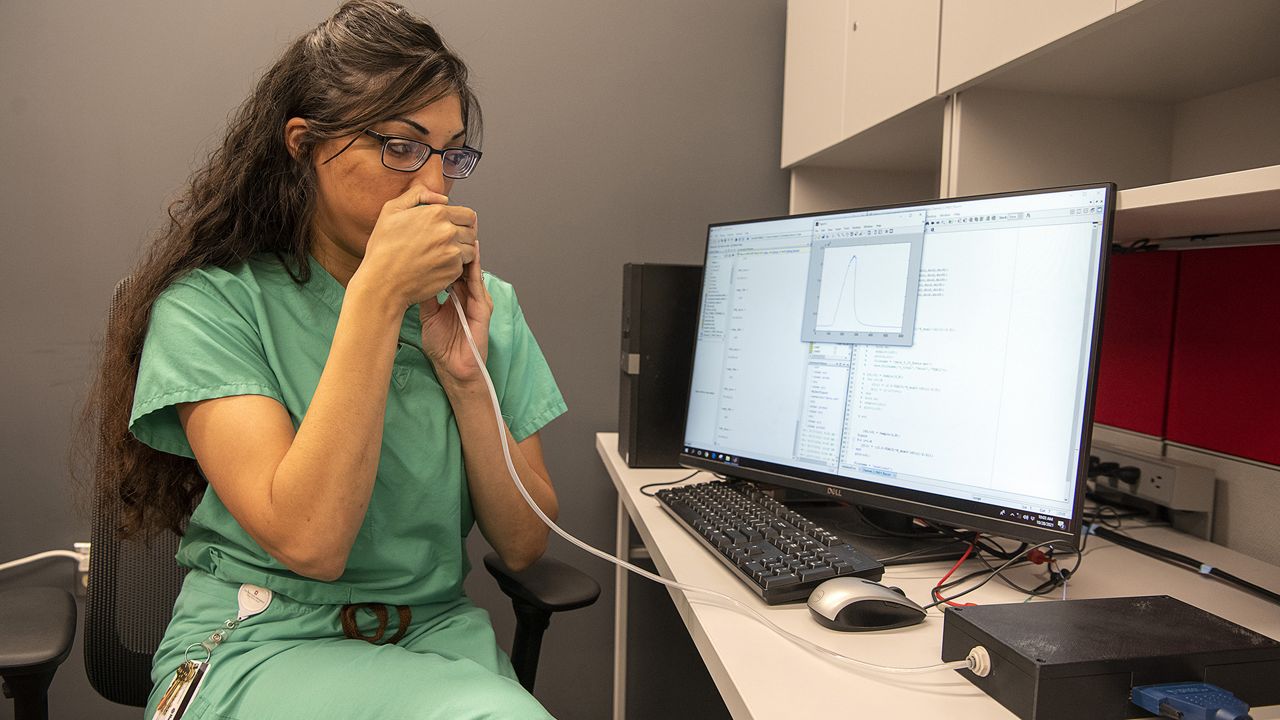COLUMBUS, Ohio — Ohio State Wexner researchers reported successful results Thursday from a study of a rapid test to detect COVID-19 from patients’ breath.
What You Need To Know
- The test successfully identified COVID-19 in severely ill patients
- It could be a noninvasive way to test for the virus, researchers say
- Research team is seeking FDA approval for the breath test
The breath test can identify COVID-19 infections sensing patterns from a patient’s “breath print,” the makeup of gases in exhaled breath, the researchers said.
According to a research article published in PLOS ONE, the study followed 46 hospitalized patients at Wexner who were receiving mechanical ventilation for respiratory failure, half of whom had COVID-19. The study collected “breath bags” from patients four times during their ICU stays.
The breath test was 88% effective in the study of the hospitalized patients upon admission to the intensive care unit, and the researchers said it showed promise in detecting the virus early in the course of infection.
While further research is planned to evaluate the breath test in patients who may have milder illnesses, the researchers said the breath test offers advantages over other forms of testing because it’s quick and noninvasive.
“The use of breathalyzer technology to rapidly diagnose patients with respiratory infections has the potential to greatly improve our ability to rapidly screen both patients and asymptomatic individuals,” the authors wrote.
The research team is seeking an emergency-use authorization for the test from the Food and Drug Administration. The handheld electronic device detects infections based on the interaction of oxygen, nitric oxide and ammonia.
Director of Critical Care Dr. Matthew C. Exline, the lead researcher, said the test can identify COVID-19 within 15 seconds.
Pelagia-Irene Gouma, a materials scientist at Ohio State, said the results are the first of their kind.
“This novel breathalyzer technology uses nanosensors to identify and measure specific biomarkers in the breath,” Gouma said in a news release. “This is the first study to demonstrate the use of a nanosensor breathalyzer system to detect a viral infection from exhaled breath prints.”




